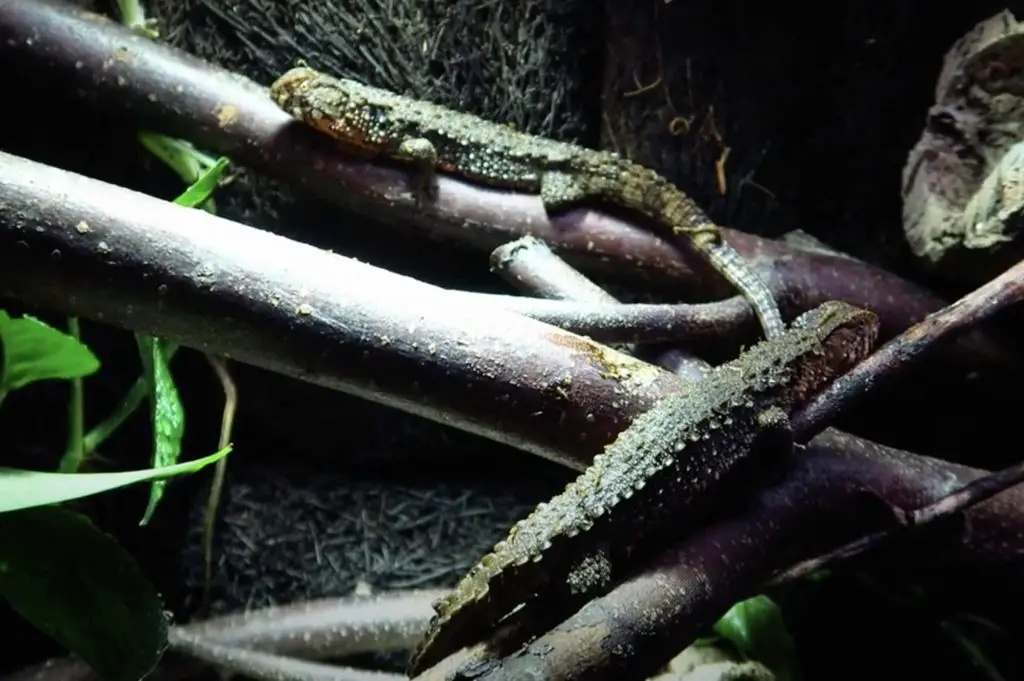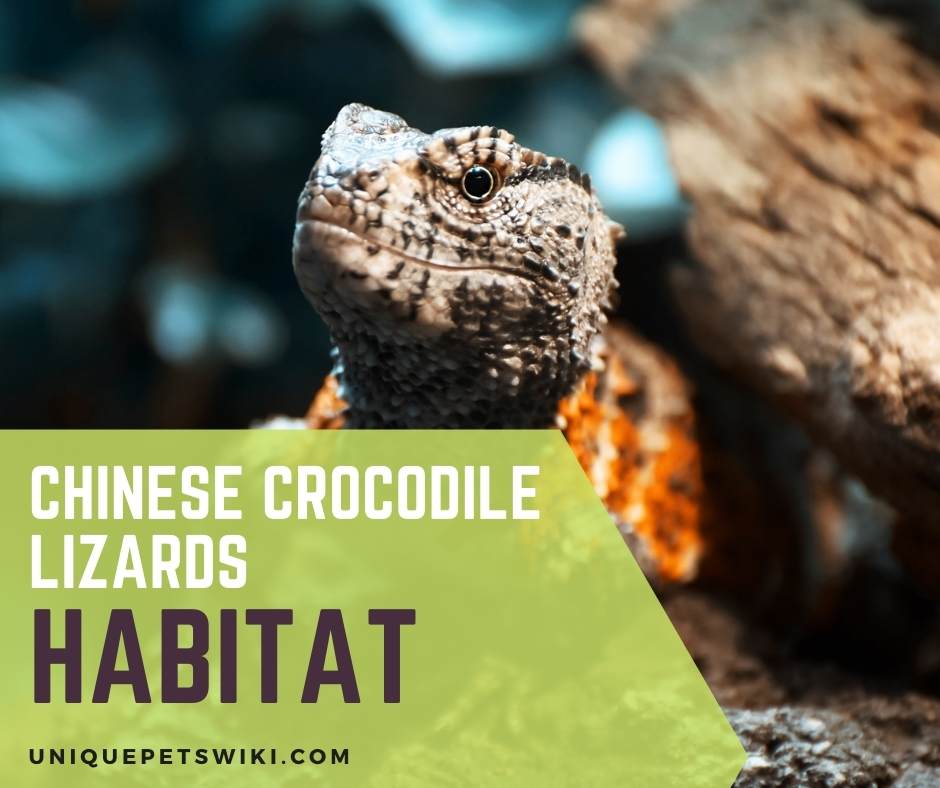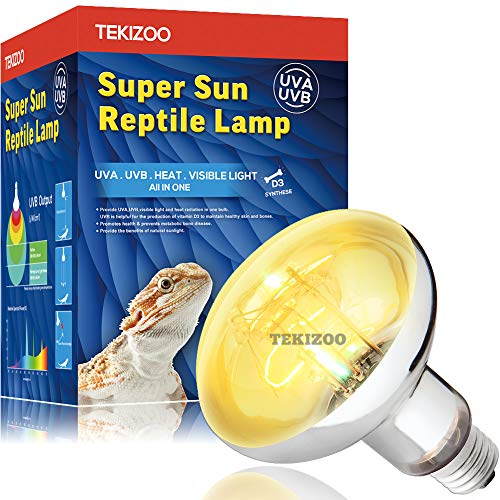The Chinese crocodile lizards aren’t only terrestrial, they live in water as well. Their terrestrial habitat in the wild is always near small ponds or slow-moving streams. With this in mind, what is the best Chinese crocodile lizard habitat set up in captivity? Let’s find out together.
In the wild, they enjoy swimming in the water. Besides swimming for fun, they have the habit of dropping into the pond whenever they feel threatened. Once they dropped to the water, they would use their strong tail to propel themselves (swim) out of the reach of predators.
With this in mind, it’ll be challenging to build them a perfect habitat as a newbie especially if you don’t have any clue of what to do and where to start from.
Not to panic, you aren’t the only one saddled with this challenge. Almost all first-time keepers found it perplexing to set up their habitat for the first time.
That said, this article is designed to teach you different ways and the best way to set up Chinese crocodile lizards’ habitat.
At the end of this article, not only will you learn the best way to set up the Chinese crocodile lizards’ habitat, but will also be better to educate others. Keep reading.
Contents
Chinese Crocodile Lizard Habitat

Before we proceed any further, let’s review the natural habitation of these lizards. A better understanding of what their natural environment is like will guide us on what to replicate in captivity.
The Chinese crocodile lizards are native to Southern China and Northern Vietnam. In these regions, they occupy subtropical forests where there is temperate annual rainfall and dense vegetation.
It is on this vegetation that they seek shelter and protection from the sun and while sleeping. All through the year in these regions, the lizards experience temperate-heat climate with temperature ranging from 65° F – 95°F.
During winter, usually between the months of November and March when the temperature drops below 60°F, they would hibernate on tree holes and rock crevices in order to survive the cool months of winter.
Types Of Chinese Crocodile Lizard Enclosures
When it comes to enclosures set up for Chinese crocodile lizards, they’re housed in different ways. Specifically, in two remarkable ways.
Some hobbyists prefer to make the enclosure all ‘aqua terrarium’ by filling up the bottom of the tank with 90% – 100% of water; including branches, cork backs, and hides in and above the water for the animals to reside in, and around the water and dry up when necessary.
On the contrary, a few others house their lizards in an enclosure where half of the tank is made dry (as in terrestrial) and the other half is a pool using a large water bowl.
The dry/terrestrial part of the enclosure is decorated with sand substrates, hides, branches, plants, and cork backs to replicate the dense vegetation of their natural subtropical habitat.
Both methods of setting up the enclosure are good but what you should work with is the method you’ll find easy to set up and clean and what your lizard would love.
Chinese Crocodile Lizard Enclosure Setup

Having understood what Chinese crocodile lizards’ habitat looks like in the wild, to give them a perfect habitat in captivity, we must replicate the subtropical, temperate-climate temperature and dense vegetation environment in captivity.
By this, the ideal enclosure setup is an aqua-terrarium where the bottom is filled with 80% – 100% of water with branches, cork backs, and hides are added in and above the water for the lizards to reside in, and around the water and dry up when necessary.
Many keepers who use the method of dividing the enclosure into two halves noticed that their lizards barely use the terrestrial (dry) part.
These lizards in captivity tend to be more aquatic in nature than on the branches. They are often seen sleeping in the water with only their heads resting on a branch above the water.
Although they would use every part of their enclosure every once in a while, providing them enough water with lots of branches, plants, and hides in and out of the water to rest on is ideal.
- To set up this type of cage setup you’ll need the following:
- A sizable tank/enclosure.
- Freshwater.
- Lots of branches, hides, and cork backs.
- Plants and shrubs to create vegetation.
- Washed white sand, small stones, and small fishes for the water area.
- Light/UVB bulbs.
- Heat bulbs.
Enclosure Size
Last update on 2022-12-29 / Affiliate links / Images from Amazon Product Advertising API
These species of lizards are somewhat small in size. They only grow to about 42cm as adults. Once they attain maturity, their body can best be described as square-like with the tail taking over 60% of its total length.
Even with this relatively small size, Chinese crocodile lizards require large – very large enclosures in captivity. They need large enclosures because of the type of habitat you would have to set up for them.
Some keepers would say that they’ve successfully kept their lizards in a 90 x 45 x 60cm or 3.6 x 1.6 x 1.9 feet enclosure. However, these sizes of enclosures would be too small to give room for activities.
Once the cage is cluttered up with decorations, there wouldn’t be enough space for them to move about as though in the wild. But if you’re planning to house only one young lizard and you’re working on a low budget, you can get an enclosure of this size.
Ideally, the appropriate size of enclosure for Chinese crocodile lizards is a tank size of 4.9 x 1.6 x 1.9 feet or 100 x 50 x 80.
Chinese Crocodile Lizard Lighting (Temperature)
Last update on 2022-12-29 / Affiliate links / Images from Amazon Product Advertising API
Shinisaurus love and thrive in low-temperature environments. In the wild, their natural habitat is characterized by a mean annual rainfall of 80 inches.
This is the reason their environment is always misted. What this means in captivity is that their cage temperature should be kept within 73.4°F – 82.4°F. Excessive high temperature will cause them stress and subsequently health issues.
Chinese Crocodile Lizard Temperature
Last update on 2022-12-29 / Affiliate links / Images from Amazon Product Advertising API
During different seasons (that is summer and winter), the temperature at which you’ll maintain within the cage will differ. But this should not go below or higher than 73.4°F – 82.4° F respectively.
On average, the air temperature during winter and summer seasons should be 78.8 F. You should also provide them a basking spot with a temperature range of 89.6°F – 95°F.
Heating + Normal Lighting + UVA/UVB
Last update on 2022-12-30 / Affiliate links / Images from Amazon Product Advertising API
Although these lizards are native to subtropical forests with a relatively low amount of sun exposure, a wide spectrum of UVA/UVB is very important in their captive habitat.
Not only will the UVA/UVB be beneficial to the lizards but also swamp plants, fishes, and other lives in the pond. You can either use high-intensity discharge (HID) UVB lamps or low-intensity UVB bulbs with an extra halogen spot.
Whatever is your choice of UVA/UVB bulbs, ensure to give even distribution across the enclosure. In essence, the light should penetrate to the bottom of the enclosure to be beneficial to the fishes and plants.
Water And Humidity
Last update on 2023-01-02 / Affiliate links / Images from Amazon Product Advertising API
Water for these species of lizards seems to be even more important to them than in the wild. They often move around in the water, hunt on the surface, sleep, mate, and give birth in water.
For this reason, your water area should be at least between 10cm – 17.5cm deep for adult shinisaurus. Younger ones that aren’t yet fully grown to adult size can be kept in a terrarium of 7cm – 30cm deep water.
This is to ensure that the lizards can get out of the water anytime without assistance. It’ll also eradicate the possibility of younger shinisaurus getting drowned in too deep water.
Once you’re satisfied with the water level in the enclosure, you must ensure that the water is kept at an appropriate temperature.
To maintain accurate water temperature, it must always measure between 71°F – 77°F. You’ll always have this temperature gradient if the enclosure is adequately heated.
Another very important aspect of the shinisaurus habitat is sufficient cross ventilation. With water in its enclosure, be careful that humidity isn’t raised beyond normal.
To keep this in check, keepers usually puncture small holes on the upper sides of the tank where there is no water. Ideally, the air humidity of the enclosure should be between 70% – 80%. At this level, it’ll ensure that the animals aren’t always wet.
Always getting wet because of raised humidity and unclean or unfiltered water are reasons the lizard would develop health issues in captivity. Thus, it is very important to keep the water filtered and clean.
That said, sufficient ventilation and filtration are ideal in the enclosure but a very strong flow should be avoided.
Chinese Crocodile Lizard Supplies, Décor, And Landscaping
Last update on 2024-10-04 / Affiliate links / Images from Amazon Product Advertising API
Needless to think too much about how best to design and decorate your lizards’ enclosure. Many brands dealing in reptile supplies out there make this task seamlessly possible and easy.
On the contrary, if you find these brands limiting in what they have to offer, you can go out of your way to self-made what you want. But this will be more costly than buying already made accessories for decoration.
A lot of extraordinary creative terrarium designs I’ve seen are homemade or self-made designs. But like I said earlier, this is an expensive way of decorating and furnishing their enclosure.
A few trusted brands that you can get accessories from for decorating your shinisaurus enclosure include
- Exo Terra Rainforest Ground Plant, Reptile Terrarium Decoration.
- Blue Ribbon Driftwood Centerpiece with Plants.
- Exo Terra Forest Branch, Reptile Terrarium Decoration.
- Plastic Reptile Tank Decor Resin Reptile Platform Artificial Tree Trunk Design Reptile Water Dish Water Bowl for Lizard, Gecko, Water Frog, Other Reptile.
- EONMIR 8-Foot Reptile Vines, Flexible Jungle Climber Long Vines Habitat Decor for Climbing, Chameleon, Lizards, Gecko.
- Fluker’s 51019 Small Animal Bend-A-Branch Pet Habitat Decor, Medium, brown.
- emours Natural Driftwood Branches Reptiles Aquarium Decoration Assorted Size, Small,4 Pieces.
- Aqua KT Reptile Corner Branch Terrarium Plant Decoration with Suction Cup for Amphibian Lizard Snake Climbing.
- Zoo Med Cork Bark Round for terrariums.
- KERUIDENG Reptile Plants Artificial Terrarium Plants Reptile Plastic Plants for Reptile Habitats with Base.
Chinese Crocodile Lizard Substrate (Flooring)
The best enclosure set up for Chinese crocodile lizards is to fill the entire bottom of the tank with water. Since 80% – 100% of the bottom space of their enclosure will be covered with water, the only substrate you would need are some coarse rounded stones and river sand.
However, you can still keep them without these items as substrates. The only bad side of not having these substrates in their enclosure is that it’ll not simulate the wild ‘freshwater stream’.
To make the terrarium more naturalistic, you can add some fish such as barbels, loaches, and shrimps to the water.
Wrapping Up
I believe this article has delivered on its promise of educating you on the best way to set up Chinese crocodile lizards’ habitat. Having these lizards around as pets is exciting but you must be conscious about their habitat and maintaining the ambient temperature.
As stated earlier, what causes diseases most of the time is poor ventilation and high humidity. This usually leads to a situation where the lizards can’t keep dry when they’re not in the water.
If this occurs often for a long time, they’ll develop skin disease. That notwithstanding, shinisaurus are very docile lizards to have as pets with less vulnerability for diseases if your husbandry is premium.






